Touring Boyacá, one of the departments located in the center-east of Colombia, adjacent to the country’s capital, Bogotá, is to walk through lands full of adventure, beautiful landscapes, culture, delicious gastronomy and a legacy of epic gestures of independence that marked the history of this Latin American country. In this tourist map we invite you to know a district located in the Andean region, which consists of 123 municipalities full of the most varied landscapes and climates, with colonial and ecological attractions that are the center of attraction for travelers seeking more than just sun and beach. Boyacá is full of small and beautiful towns and in each one you will live a different experience.
Tourist Map of Boyacá
More than a tourist city, Boyacá is the sum of towns and natural sites, located in the 23,189 square kilometers that make up the region and in which there is a history that determined the independence of Colombia, which is why it was catalogued by the Liberator Simón Bolívar as “Cradle and Workshop of Liberty”, since it was in these lands where the famous Battle of Boyacá was fought in 1819, a feat in which after several centuries of Spanish domination, Colombians obtained their independence. This historical legacy is manifested in the architecture that speaks for itself in each of the towns, as well as the craftsmanship that tells the traditions of the towns that make up the area and that became a tradition and one of the most important artistic expressions in Boyacá. Its gastronomy, so nourished and varied, is one of the aspects that stand out with a variety of typical dishes, based mainly on corn, yucca, potatoes and meat, especially lamb. Among the most traditional drinks, visitors can taste the chicha and guarapo de maíz, as well as the masato de arroz and agua de panela, which are part of the idiosyncrasy because they have been on the table of its inhabitants since the 17th century.
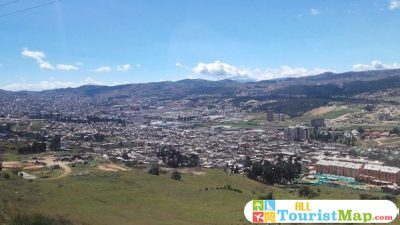
The district of Boyacá was formed geographically around the Magdalena River, Colombia’s main tributary, but is surrounded by the eastern mountain range, the Cundinamarca-Boyacá highlands and the eastern plains. This geographical mix is one of the main tourist attractions of the region and makes this territory enjoy the greatest variety of climates in the whole country, from the desert in La Candelaria, to the most intense cold with temperatures below zero in the Páramo de Pisba. Not only the Magdalena River runs through the area, the district is crossed by several tributaries contained in five major basins such as the Meta, Chicamocha, Arauca, Suarez and Magdalena Rivers, which make the place a hydrographic power that supplies electricity to the country. To reach the municipalities of Boyacá, users have three main airports, Gustavo Rojas Pinilla Airport in the town of Tunja, the capital of the district, Alberto Lleras Camargo Airport in the town of Sogamoso and Juan José Rondón Airport in the town of Paipa. The district, by the amount of rivers with which it counts, also has fluvial transport, being the most important the one that is developed around the Port of Boyacá.
Tourist Guide of Boyacá
Boyacá, as a tourist destination, offers everything a traveler desires in terms of landscapes and diversity of flora and fauna. It is the closest Colombian district to the capital where you can do ecological, historical and cultural tourism, not in vain the tourism promoters of the area claim that this is a territory that has everything you could wish for. So the tour does not only focus on Tunja, the district capital, a city that was founded in 1539 and was the settlement of the Muisca culture. Choosing this district is to arrive at a site that offers a variety of plans, which can be adapted to all kinds of budgets, from a comfortable hotel infrastructure, visits to haciendas, provincial areas, special sites for ecotourism like Paipa or Villa de Leiva, not without first arriving at the Boyacá Bridge, the site where the patriots fought the independence battle against the Spanish colonizers.
What to visit in Boyaca
Tunja

Tunja is the first destination you should visit when you arrive in Boyacá. It is the capital of the district, founded in 1539 and as it is the center of the city, it offers architectural sites that are of great interest, such as Plaza Bolivar, the Museum house of the Founder Gonzalo Suarez Rendon, which is currently the seat of the mayor’s office, and the Boyacá Academy of History, among other buildings of interest. Religious tourism is also important with buildings such as the Santa Clara de la Real Convent. This is the first architectural work built in the New Kingdom of Granada, or the Baroque style temple Iglesia de Santo Domingo, where murals dating from the sixteenth century are displayed.
Paipa

Paipa is the ideal place to enjoy culture, festivals and gastronomy. In this town a series of festivals are held in various areas such as music, gastronomy and crafts, throughout the year, among which the National Band Festival, Festival of the Ruana, Festival of Almojábanas, and the Festival of Anthology of Colombian Music. El Paipa is also historical architecture, as you can also visit Casona del Salitre, a colonial building that was declared a national monument in 1974. In addition, this town is the cradle of the famous Almojábanas (a type of bed sheet) that are known throughout Colombia. It is the place where the best yucca bread and the famous paipa cheese are prepared, which are the delights of the area.
Villa de Leyva

Nuestra Señora de Santa María de Leyva, better known as Villa de Leyva, is a tourist town founded in 1572, in the place where a Muisca culture settlement used to operate. This is the town where white walls, brick roofs and green balconies predominate. It is a colonial-type town where the climate varies from hot midday to cold windy nights. It has historical sites of interest such as the Theme Park, created in 1900, the Convent of the Barefoot Carmelites and the Fossil Museum. Visitors can enjoy a variety of beautiful rivers such as Sáchica and Moniquirá, but above all the Quebrada Colorada, with the purest water in the region.
Tinjacá

Tinjacá, in the indigenous word means “royal mansion of a sovereign”. This town of Boyacá is known for having an almost perfect climate, for being a haven of calm and peace, both for its inhabitants and for those who are visiting. The town, which has approximately 2.50 inhabitants, was founded in 1550 by a Hunza cacique. It has a mostly rural population, so it has a very reduced urban area, with a square and a colonial church, as well as colonial houses that resisted the passing of time and are well preserved. It is the ideal destination for those who wish to get away from the dynamics offered by the cities and take a moment to receive energy from nature and be calm.
Chiquinquirá
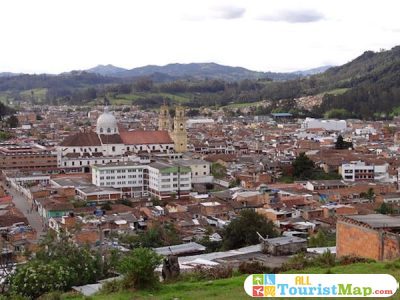
Religious tourism is done in Chiquinquirá, a town where the Virgin of the Rosary is worshipped in all her expression. A must see is the Basilica Virgen del Rosario which is a sanctuary of the Virgin and was also visited and toured by Pope John Paul II. In the same order you can also visit the Monastery of Santa Clara and the Chapel of Santa Bárbara. But, not everything is religion because there are also monuments erected to venerate music such as the Guavina Chiquinquireña. There are also natural parks, such as John Paul II, which consists of thirty hectares of land where you can watch eagles and other bird species. This is one of the towns where you can better appreciate handicrafts as an artistic expression.
Nobsa
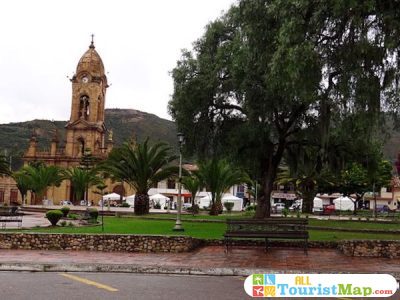
Nobsa is a tourist town from beginning to end, whose main attractions are the vineyards and the handicrafts. Close to Tunja, the capital of Boyacá is an area of easy access since it has very good communication routes and landscapes that are true paradises. Visitors can visit the vineyard where the wines of El Marqués de Punta Larga are prepared, the Vine and Wine Festival is held there and, all year round, wine tasting sessions can be held and the drink can be purchased at good prices. The Iron and Steel Museum also stands out as a place of interest, as it is there that the iron and steel history of the country can be learnt.
Iguaque Sanctuary
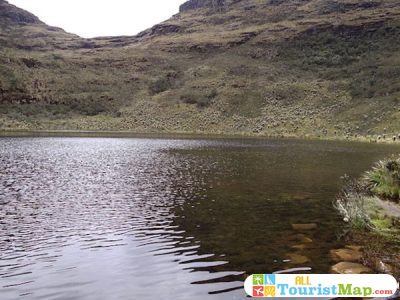
The tour to the Iguaque Sanctuary, located near Villa de Leyva in the Cundinamarca-Boyacá highlands, begins with a trail that leads to the Iguaque Lagoon. The journey includes passing through landscapes such as forests and moors, in which there are about eight more lakes and which is a sacred place in Muisca mythology. Upon arriving at the Iguaque Lagoon, which has a glacial origin, many frailejones can be seen. Throughout the sanctuary, you can see moorland ecosystems, wetlands, high Andean forest and oak groves. Around the sanctuary, peasants who dedicate themselves to agriculture and fishing live.
Sierra Nevada del Cocuy

The Sierra Nevada del Cocuy is made up of a chain of more than 25 peaks, over an area of thirty kilometres, which are always covered with snow. Also known as Guican and Chita, it is one of the most important glacial masses in Colombia, which can also be crossed on foot. This mountain range is part of the El Cocuy National Natural Park, where there are Andean forests and basal jungle, where you can see a lot of fauna like the tapir, the morrocoy, the corn monkeys and the araguato. Also the spectacled bear and the puma. Birds like the Andean condor, the Paujil Copete de Pied. The rock cockerel and the eagle.
The Tota Lagoon
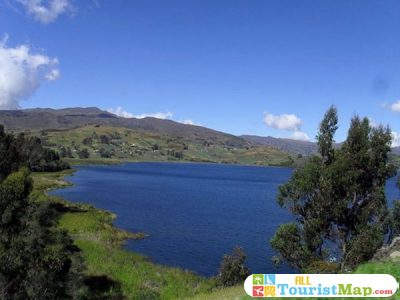
La Laguna de Tota is located about 24 kilometers from Sogamoso. It is a lagoon where you can sail and also fish for rainbow trout. It is a beautiful landscape where tranquility reigns, a fresh climate, which is located near a town known as Iza, where there is a good offer of hotels to stay overnight.
Raquira

Raquira is a village located eighty kilometers from Tunja, the capital of Boyacá. It is the main craft center of the district and is located very close to the desert of La Candelaria, one of the hottest areas of the district. In this town you can visit a monastery that was built in 1602 and is still preserved and you can appreciate its architectural beauty, as it is one of the oldest that exist in Colombia. This monastery offers accommodation to both pilgrims and tourists and during the stay there you can access a museum where you can appreciate objects of historical interest.
Boyacá Hotel Map
Throughout Boyacá, there is a very good hotel infrastructure, with some 2,509 rooms in hotels throughout the district. There are also a number of cabins, lodges, camping sites, boarding houses, and inns, among others. All this gives to stay with the most varied budgets and diversity of places, according to the preference of the tourist. However, the best accommodation option will always be the capital of the district, Tunja, where the hotel offer is wide and offers many comforts such as boutique hotels, luxury, with spa or colonial style, especially in the historic center. One of the most recommended is the Hotel Bicentenario, a three-star establishment with comfortable rooms with integrated bathrooms and basic services. The Hotel Hunza, a four-star hotel, is also among the most recommended hotels in the Boyacá area.
